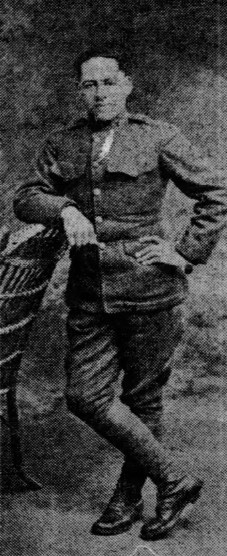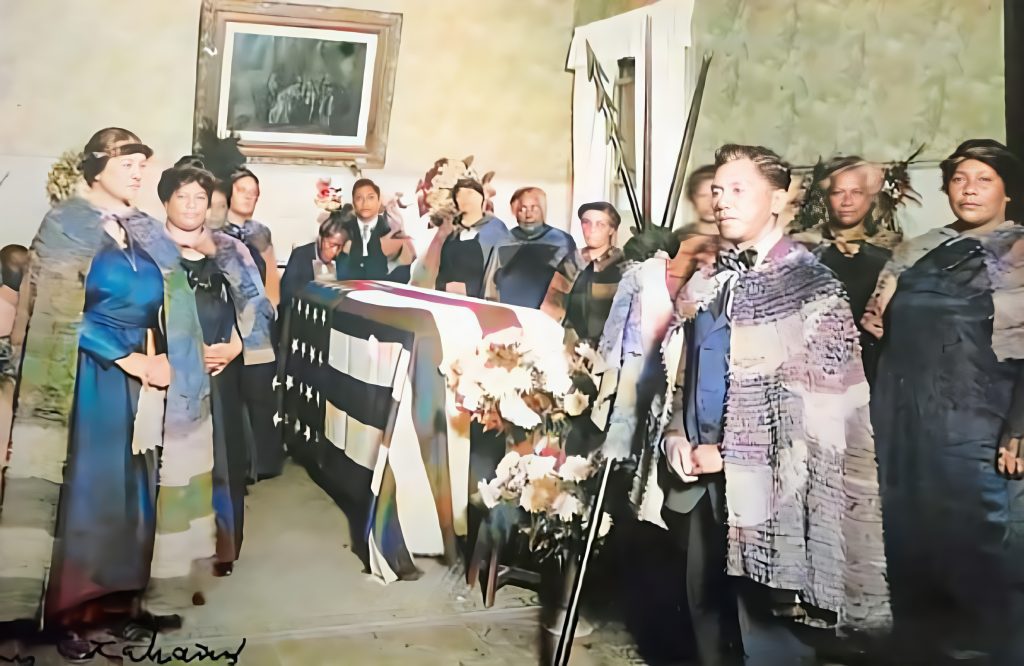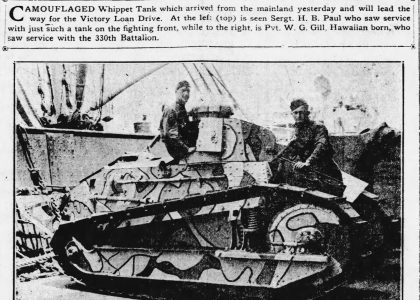 Clarence J. Watson was born in Honolulu on September 15, 1898. He was a young man of Hawaiian ancestry, growing up in a city on the brink of modern transformation and global conflict. Clarence was part of a close-knit family—his father, Jacob Watson, worked for the Hawaiian Electric Company, and he had two sisters and two brothers. Additionally, he was the nephew of T. Apana, a well-known local figure, and cousin to Mr. and Mrs. A. Kalana, all of whom lived in Honolulu.
Clarence J. Watson was born in Honolulu on September 15, 1898. He was a young man of Hawaiian ancestry, growing up in a city on the brink of modern transformation and global conflict. Clarence was part of a close-knit family—his father, Jacob Watson, worked for the Hawaiian Electric Company, and he had two sisters and two brothers. Additionally, he was the nephew of T. Apana, a well-known local figure, and cousin to Mr. and Mrs. A. Kalana, all of whom lived in Honolulu.
In April 1918, at just 19 years old, Clarence became one of the first individuals from the islands to join a new contingent of U.S. Army engineers departing for the mainland. A photograph published in the Honolulu Star-Bulletin captured him alongside other local enlistees—Native Hawaiians, Portuguese, Chinese, and others—united in their service. Clarence enlisted in Company 17 of the Railway Engineers, a specialized unit of the American Expeditionary Forces (A.E.F.), and was soon deployed to France during the final stages of World War I.
Clarence’s life ended far from his island home. He died on November 7, 1918—just four days before the armistice—in a military hospital in St. Nazaire, France, from lobar pneumonia, likely a consequence of the influenza pandemic that swept through the Allied forces. He was 20 years old.
While his death was just one among many during the brutal closing months of the war, the people of Hawaiʻi did not forget him. Clarence’s remains were the first of Hawaii’s fallen soldiers from the European front to be returned home. His body arrived in Honolulu aboard the Madawaska in December 1920, more than two years after his death.

The return of his body was marked by a deeply ceremonial and culturally significant funeral that blended military protocol with Native Hawaiian tradition. His service was held at the mortuary chapel of Henry H. Williams in Nuuanu. The Reverend Henry K. Poepoe of Kaumakapili Church presided over the rites, which were conducted entirely in Hawaiian. His casket, draped in the American flag, was honored by a watch from the Daughters and Sons of Hawaiian Warriors. Wearing capes patterned after the feathered cloaks of aliʻi (chiefs), the watch stood silently and immobile in shifts, paying tribute to one of their own.
 Mrs. Jacob Watson, Clarence’s mother, sat quietly at the head of the casket, embodying the stoic grief felt throughout the room. The burial procession, escorted by officers and troops from the Hawaiian Department of the Coast Artillery, moved reverently through the streets of Honolulu. Observers removed their hats as the cortege passed—some instinctively, others as an act of communal respect.
Mrs. Jacob Watson, Clarence’s mother, sat quietly at the head of the casket, embodying the stoic grief felt throughout the room. The burial procession, escorted by officers and troops from the Hawaiian Department of the Coast Artillery, moved reverently through the streets of Honolulu. Observers removed their hats as the cortege passed—some instinctively, others as an act of communal respect.
At Nuʻuanu Cemetery, Clarence was laid to rest in the Watson family plot with full military honors. A firing squad delivered a three-volley salute, and an army bugler sounded “Taps.” The pallbearers were fellow veterans of the A.E.F., men who had served in France and knew firsthand the hardships Clarence had endured: men like William Kam of the 91st Division and Ah Chong of the 32nd Division.
Those who attended remembered other funerals—hurried, muddy burials on foreign soil, in the shadow of shellfire and rain—but this was different. Clarence had come home.
At his funeral, Clarence was honored as both a soldier of the United States and a Hawaiian son. His community, including members of Native Hawaiian societies and civic groups, demonstrated that his sacrifice, though made thousands of miles away, was deeply rooted in the land and people of Hawaiʻi.
His name appears on the bronze plaque outside the Waikīkī War Memorial Natatorium, listed among those who gave their lives in the Great War. Clarence J. Watson did not live to see the peace he helped to make possible, but in death, he became a symbol of Hawaiʻi’s commitment to that cause.
Sources:
Honolulu Star-Bulletin, December 21, 1918, Page 4 “Local Boy Dies Near War’s End”
Honolulu Star-Bulletin, April 13, 1918, Page 24“Hawaii Boys Will Become U.S. Engineers”
The Honolulu Advertiser, December 30, 1920, Pages 8 & 3 “Impressive Rites Attend Funeral of Dead Warrior”
U.S. Army Records (17th Railway Engineers, A.E.F.)


